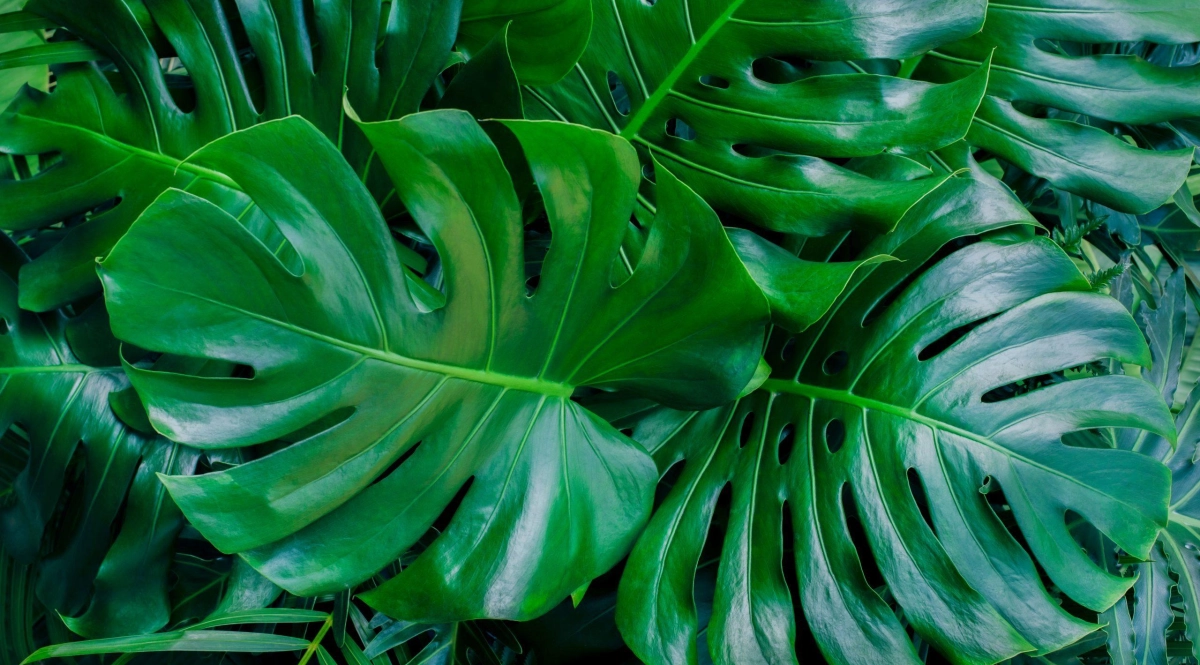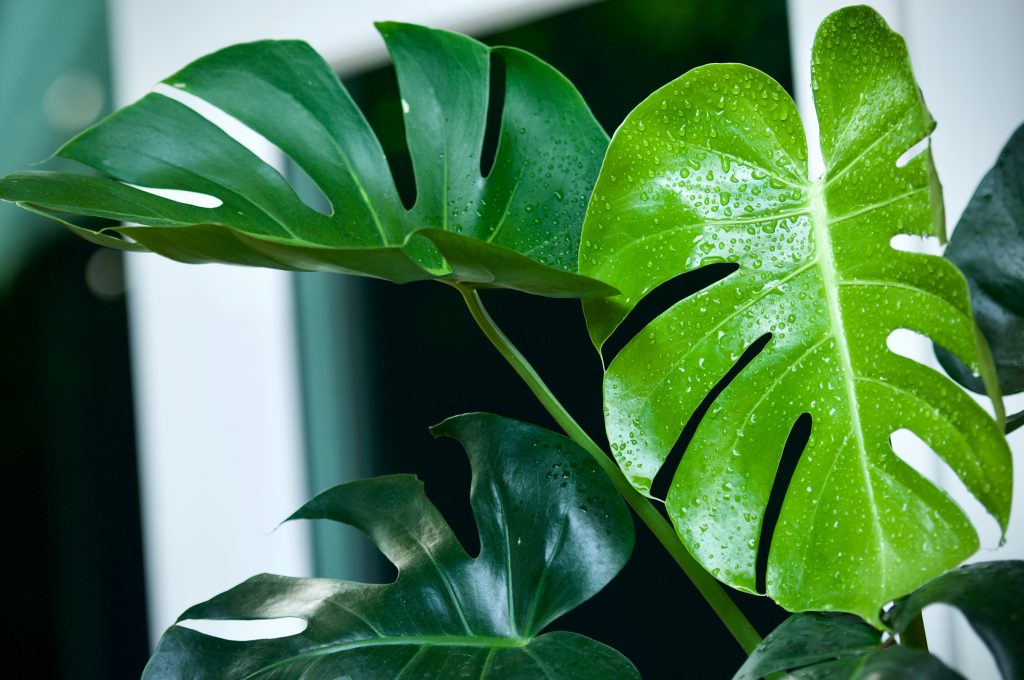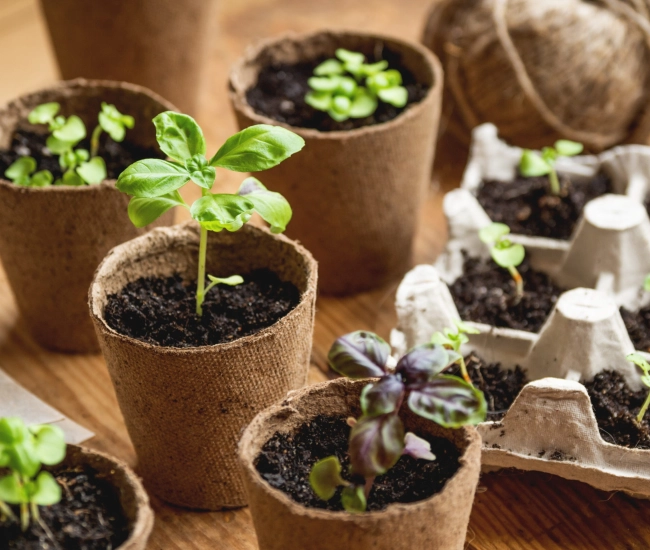
With its naturally glossy immense leaves, climbing stems, and tropical look, it's no wonder the Monstera deliciosa is so trendy. Native to the tropical forests of Central and South America, it can climb up to 4.5 m in nature and reach over 2.5 m in width. Fortunately, indoors, its maximum spread rarely exceeds more than 3 m in height and 1.5 m in width, which is why it can easily be used both as a climber securely attached to a support and as a beautiful cascading plant.
A story of leaves... and holes
The main attraction of the Monstera deliciosa is undoubtedly its unique foliage. Initially small and whole, beautifully heart-shaped and shiny, its leaves transform over time and become more graphic and oversized. Large splits appear at maturity, leaving large holes sometimes round, sometimes oval on the mature leaves, earning it the nickname "Swiss cheese plant." Occasionally, it may bloom and produce small yellowish spikes surrounded by cream-colored spathes, though this flowering is of little interest.

The Monstera, F for easy...
The Monstera deliciosa requires little care. Although it can tolerate diffuse and low lighting (north), it prefers a brighter exposure to the east or west, but without direct sunlight, allowing it to optimize its development and display a superb cut foliage. A rich and well-draining potting mix obtained by mixing two parts indoor plant soil with one part soil for succulents and cacti is beneficial since it does not tolerate excess water. When the soil is almost completely dry (3/4 of the root ball), a deep watering with lukewarm water satisfies it. Coming from warm and humid tropical regions, it appreciates high ambient humidity. To achieve this, in winter, spraying water on its foliage once a week and maintaining a cooler temperature increases humidity and prevents its leaves from drying out.

Fertilization, pruning, and repotting of the Monstera
The fertilization needs of the "Swiss cheese plant" are similar to those of most indoor green plants. In March, an application of natural nitrogen-rich fertilizer will stimulate its growth. Subsequently, around mid-June, a phosphorus and potassium-rich fertilizer will keep it healthy throughout its active period. Around mid-August, adding a potassium-rich fertilizer will help it prepare for less favorable conditions. This will make it more resistant to the winter constraints (deficient light, temperature, and humidity) it will face indoors.
Over time, fine aerial roots develop on its stems to capture moisture from the ambient air. It is best not to cut them. Very resistant to pruning, its tips can be slightly and regularly trimmed to control its growth. Repotting is done as needed, when the plant becomes too cramped, using a container with a drainage hole and only slightly larger than the old one.

To consult the technical sheet of the Monstera Deliciosa, click here.
Text: Hélène Baril – Horticulturist, speaker & author
Tips and advice



